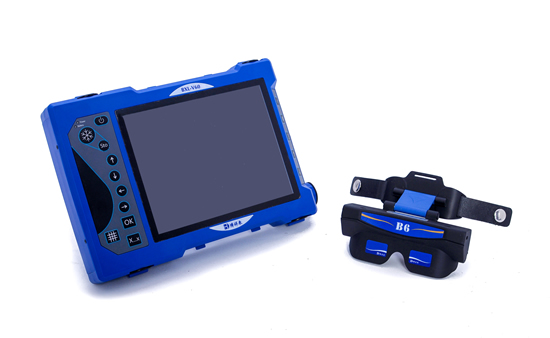Veterinary ultrasound for cattle has become an indispensable tool in modern livestock management, offering precise, non-invasive methods to diagnose health conditions, monitor pregnancies, and assess overall animal wellbeing. As farmers and ranchers seek more efficient and effective ways to manage their herds, ultrasound technology has proven to be a game-changer, providing valuable insights into the health of cattle without the need for invasive procedures.

In this article, we’ll explore the benefits of veterinary ultrasound for cattle, how it works, its various applications in herd management, and how it can improve livestock health and farm profitability.
What is Veterinary Ultrasound?
Veterinary ultrasound for cattle uses high-frequency sound waves to create real-time images of internal structures within the animal’s body. The process is safe, painless, and does not require surgery or incisions, making it an ideal diagnostic tool for evaluating a range of health issues in cattle. A trained veterinarian or ultrasound technician applies a gel to the cow’s skin and uses a handheld probe to capture images, which are then displayed on a monitor for further analysis.
Benefits of Veterinary Ultrasound for Cattle
1. Early Pregnancy Detection
One of the most common uses of veterinary ultrasound in cattle is pregnancy detection. By identifying pregnancies early, farmers can better manage calving schedules, ensure proper nutrition, and reduce the risk of complications during delivery. Early detection also helps determine the health of the fetus, enabling prompt intervention if needed.
With ultrasound, veterinarians can detect pregnancy as early as 30 days post-breeding, compared to traditional methods that may only reveal pregnancy at 60-90 days. This allows farmers to make quicker decisions about culling, breeding, and overall herd management.
2. Fetal Health Monitoring
Beyond pregnancy detection, veterinary ultrasound enables farmers to monitor the health and development of the fetus throughout gestation. Veterinarians can assess fetal size, movement, and organ development, identifying potential issues such as fetal death, malformations, or growth abnormalities. This early detection provides opportunities for interventions that can save the pregnancy and improve the health outcomes of both the cow and calf.
3. Improved Reproductive Management
Ultrasound plays a crucial role in reproductive management by helping farmers identify the optimal times for insemination. Veterinarians can use ultrasound to assess the ovaries, detect follicular development, and monitor the timing of ovulation. This information is invaluable for improving conception rates, reducing the number of insemination attempts, and increasing the efficiency of breeding programs.
4. Non-invasive Health Monitoring
Ultrasound is a non-invasive method for diagnosing a range of health problems in cattle. For example, it can be used to detect issues such as:
- Lung and abdominal issues: Ultrasound can detect fluid buildup, tumors, or abscesses in the lungs, liver, or other organs.
- Heart disease: It can also assess heart conditions, including heart failure or arrhythmias.
- Musculoskeletal injuries: By scanning joints and muscles, ultrasound can identify injuries such as tendon ruptures, joint fluid, or ligament damage.
With regular monitoring, veterinarians can catch health issues early, preventing more serious conditions and reducing veterinary costs over time.
5. Improved Calf Health and Survival Rates
By using ultrasound to monitor the health of both the pregnant cow and the developing calf, farmers can take proactive steps to improve calf survival rates. Early detection of problems such as fetal distress, low birth weight, or developmental issues can lead to better management decisions, such as adjusting the cow’s diet, providing supplemental care, or scheduling a timely cesarean section if needed.
Applications of Veterinary Ultrasound in Cattle Management
Veterinary ultrasound has a wide range of applications in cattle management, including:
- Pregnancy Diagnosis: Early identification of pregnancy allows farmers to optimize breeding schedules and ensure that cows are not bred too soon or too late after calving.
- Reproductive Health Assessment: Monitoring the reproductive tract for abnormalities or issues, such as cysts or infections, helps maintain fertility and prevent costly breeding failures.
- Liver and Kidney Function: Ultrasound is useful for assessing the health of internal organs, including the liver and kidneys, which are crucial for overall health.
- Milk Production Efficiency: By monitoring reproductive and overall health, ultrasound helps ensure cows remain in peak condition, optimizing milk production and quality.
- Calf Monitoring: Ultrasound can assess the development of calves in utero, improving birth outcomes by identifying at-risk pregnancies.
How Veterinary Ultrasound Improves Farm Profitability
Investing in veterinary ultrasound technology can significantly improve farm profitability in several ways:
- Reduced Veterinary Costs: Early detection of health issues allows for quicker treatment, potentially reducing the need for more expensive surgeries or extended veterinary care.
- Higher Reproductive Efficiency: By identifying pregnancies and optimizing breeding schedules, ultrasound improves conception rates, reducing the time and resources spent on unsuccessful breeding attempts.
- Increased Calf Survival Rates: Monitoring the health of both pregnant cows and developing calves leads to healthier births and higher survival rates, which directly impacts herd productivity and profitability.
- Better Herd Management: Accurate and timely data from ultrasound helps farmers make informed decisions regarding culling, breeding, and overall herd health management, ultimately leading to a more efficient and profitable operation.
Choosing the Right Veterinary Ultrasound Equipment
When selecting veterinary ultrasound equipment for cattle, it is essential to choose a system that is rugged, portable, and capable of providing clear, accurate images. Some of the key factors to consider include:
- Image Quality: Clear, high-resolution imaging is essential for accurate diagnosis.
- Portability: Since cattle farms can be spread across large areas, a portable ultrasound system is more practical and convenient for on-site evaluations.
- Ease of Use: The system should be user-friendly, allowing both veterinarians and farm staff to operate it with minimal training.
- Durability: Veterinary ultrasound equipment should be durable enough to withstand the demands of farm environments, including exposure to dust, moisture, and temperature fluctuations.
tags: Veterinary UltrasoundUltrasound


